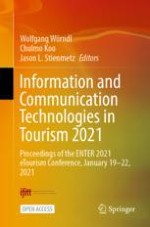1 Introduction
2 Literature Review
2.1 Artificial Intelligence
2.2 Tourism Industry
2.3 Artificial Intelligence, Tourism and Tourism Industry
3 Research Design
The main body of tourism | Forms of artificial intelligence | |
|---|---|---|
The government (Destination Management Organization) | Level of intelligence | Task automation |
Context awareness | ||
Task types | Numbers | |
Non-numeric data | ||
Forms of AI | Digital form | |
Robot form | ||
Tourism enterprises | Level of intelligence | Task automation |
Context awareness | ||
Task types | Numbers | |
Non-numeric data | ||
Forms of AI | Digital form | |
Robot form | ||
Tourist | Level of intelligence | Task automation |
Context awareness | ||
Task types | Numbers | |
Non-numeric data | ||
Forms of AI | Digital form | |
Robot form | ||
